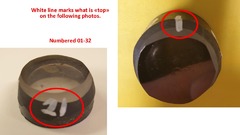| dc.contributor.advisor | Strmic Palinkaš, Sabina | |
| dc.contributor.advisor | Hansen, Harald | |
| dc.contributor.author | Hilmo, Johan Bang | |
| dc.date.accessioned | 2021-08-04T13:47:47Z | |
| dc.date.available | 2021-08-04T13:47:47Z | |
| dc.date.issued | 2021-06-13 | |
| dc.description.abstract | The Paleoproterozoic Greenstone Belts of Fennoscandia are metamorphosed and deformed volcanic and sedimentary basins with a high metallic ore potential. One of those, the Alta-Kvænangen Tectonic Window (AKTW), is exposed as a window below the Caledonides of Northern Norway. The Kåfjord area located within the AKTW hosts numerous known Cu occurrences. The Cu mineralisation in Kåfjord occurs mostly in the form of quartz-carbonate-sulphide veins hosted by magmatic and sedimentary lithologies.
While there is a demand for new ore deposits that can support the green energy transition, undiscovered deposits are partly or completely buried which has made exploration in recent years less efficient and more expensive. Streams carry material from their upstream drainage area, and therefore stream sediments can be used for exploration geochemistry to assess nearby mineralisation. The purpose of this master thesis is to identify the geochemical footprint and multi-element dispersion patterns of the Cu mineralisation in stream sediments sampled from streams draining the known Cu deposits in Kåfjord. Identification and analysis of the distribution of chemical elements will contribute to a more efficient targeting of Cu occurrences in the Fennoscandian Shield.
Stream sediments from three streams draining; (1) the sediment-hosted Cu mineralisation, (2) the mafic rock-hosted Cu mineralisation and (3) both the sediment- and mafic rock-hosted Cu mineralisation have shown different geochemical footprints. The bulk chemical composition of stream sediments exhibit a correlation between Cu and elements associated with the hydrothermal mineralisation in all three streams. Additionally, content of Cu in stream sediments seems to be associated with the respective lithologies hosting the mineralisation. Carbonate grains separated from stream sediments have isotopic compositions resembling the carbonates associated with both sediment- and mafic rock-hosted Cu mineralisation.
LA-ICP-MS analyses of individual grains separated from stream sediments resulted in multi-element data sets with minor and trace element compositions of specific minerals. The hydrothermal signature of sulphides separated from stream sediments is characterised by high contents of Ag and Se, but low concentrations of Ga. Furthermore, the hydrothermal signature of sulphides seem to be preserved in mineral aggregates derived from the oxidation of sulphides, in so-called Fe-oxy-hydroxides. Thus, Fe-oxy-hydroxides can have the potential to be used as indicators for Cu mineralisation in the Kåfjord area. | en_US |
| dc.identifier.uri | https://hdl.handle.net/10037/21928 | |
| dc.language.iso | eng | en_US |
| dc.publisher | UiT Norges arktiske universitet | en_US |
| dc.publisher | UiT The Arctic University of Norway | en_US |
| dc.rights.accessRights | openAccess | en_US |
| dc.rights.holder | Copyright 2021 The Author(s) | |
| dc.rights.uri | https://creativecommons.org/licenses/by-nc-sa/4.0 | en_US |
| dc.rights | Attribution-NonCommercial-ShareAlike 4.0 International (CC BY-NC-SA 4.0) | en_US |
| dc.subject.courseID | GEO-3900 | |
| dc.subject | VDP::Matematikk og Naturvitenskap: 400::Geofag: 450::Mineralogi, petrologi, geokjemi: 462 | en_US |
| dc.subject | VDP::Mathematics and natural science: 400::Geosciences: 450::Mineralogy, petrology, geochemistry: 462 | en_US |
| dc.title | The geochemical signature of Cu mineralisation preserved in stream sediments from the Alta-Kvænangen Tectonic Window, Northern Norway | en_US |
| dc.type | Master thesis | en_US |
| dc.type | Mastergradsoppgave | en_US |


 English
English norsk
norsk

